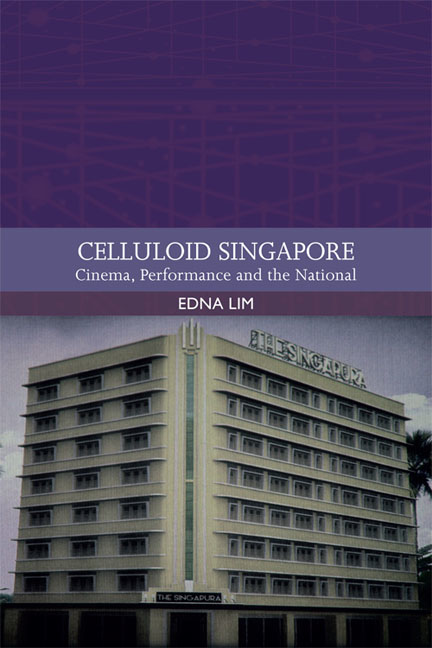Book contents
- Frontmatter
- Contents
- List of Figures
- Acknowledgements
- Traditions in World Cinema
- 1 Introduction
- 2 Merdeka!: Merger, Separation and a Transnational Golden Age
- 3 Influence, Hybridity and How the Past is a Foreign Country
- 4 Nation-building, a Nun and a Bionic Boy
- 5 Not so Foreign: the Case of Saint Jack
- 6 One People, One Nation, One Singapore
- 7 Revival Cinema: ‘Other’ Singaporeans in (An)other Singapore
- 8 Singapore Cinema in Singapore
- Works Cited
- Index
1 - Introduction
Published online by Cambridge University Press: 11 November 2020
- Frontmatter
- Contents
- List of Figures
- Acknowledgements
- Traditions in World Cinema
- 1 Introduction
- 2 Merdeka!: Merger, Separation and a Transnational Golden Age
- 3 Influence, Hybridity and How the Past is a Foreign Country
- 4 Nation-building, a Nun and a Bionic Boy
- 5 Not so Foreign: the Case of Saint Jack
- 6 One People, One Nation, One Singapore
- 7 Revival Cinema: ‘Other’ Singaporeans in (An)other Singapore
- 8 Singapore Cinema in Singapore
- Works Cited
- Index
Summary
Singapore is a small island measuring about 710 square kilometres at the southern tip of the Malaysian Peninsula. Yet its small size belies a complex historiography. Indeed, history itself became a subject of contention in the 1960s and ‘70s, when
the political movement at that point in time, led by the People's Action Party (PAP) government, … declared that Singapore had no history, that the past was irrelevant, that Singapore's history started now. History had become unfashionable … It was even removed from the primary school syllabus in 1972, in favour of more ‘practical’ subjects that prepared students to be part of the workforce of the future.
It was only in 1984 that a two-volume textbook titled The Social and Economic History of Singapore was issued to schools. The volumes, like C. M. Turnbull's seminal A History of Modern Singapore, trace the history of modern Singapore back to its founding by Sir Stamford Raffles, who established it as a trading post for the British Empire. Turnbull's work became the basis of the state-sanctioned official historical narrative, the Singapore Story. This narrative was publicly presented in an audio-visual show in 1997, called “The Singapore Story’, and later made into a video screened at the then Singapore History Museum from 1997 to 2003. This Singapore Story was also included in the National Education Programme launched by the Ministry of Education in 1997. The purpose of National Education is
to develop national cohesion, the instinct for survival and confidence in the future, by fostering a sense of identity, pride and self-respect as Singaporeans; by knowing the Singapore story – how Singapore succeeded against the odds to become a nation; by understanding Singapore's unique challenges, constraints and vulnerabilities, which make us different from other countries; and by instilling the core values of our way of life, and the will to prevail, that ensures our continued success and well-being.
According to Karl Hack and Jean-Louis Margoulin, the Story ‘reached its apotheosis’ in Lee Kuan Yew's books published thereafter: The Singapore Story: Memoirs of Lee Kuan Yew and From Third World to First: The Singapore Story.
- Type
- Chapter
- Information
- Celluloid SingaporeCinema, Performance and the National, pp. 1 - 20Publisher: Edinburgh University PressPrint publication year: 2018



